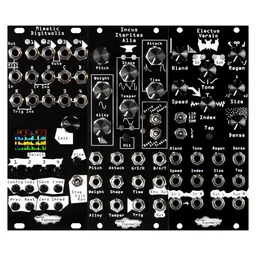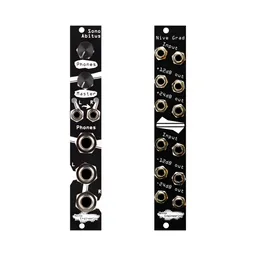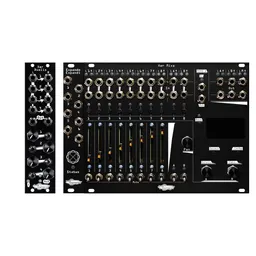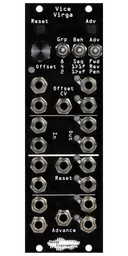Most modular patches rely on utilities, and as such there are a lot of utilities to explore in the world of Eurorack. Today, we’ll be exploring sequential switches. Sequential switches are a utility that was originally designed to extend 8-step sequencers, but they have a number of interesting uses when paired with other types of modules, too.
One in to many outs, or many ins to one out
Traditional sequential switches work in one of two ways: you can route many inputs to a single output, or route a single input to many outputs. An unexpected aspect of some sequential switches is that, in some cases (like the Doepfer A-151), their routing jacks can be both inputs or outputs; their functionality depends entirely on how you patch them. This makes them incredibly flexible, but it can be somewhat confusing the first time you patch one.

Some sequential switches can be patched in different ways, using the same jacks as both ins and outs.
The number of channels a switch has varies greatly: that Doepfer A-151 has 2 to 4 channels, but our Vice Virga has up to 8. Since patch needs vary, most sequential switches have ways of modifying the number of channels that are used.
Sequential switches have trigger or CV inputs (or both) that control the routing and advancing. When using triggers, routing will generally change sequentially in order of inputs and outputs. Switches with CV inputs allow even more control, and you can use CV to skip over channels and create not-so-sequential switching; it also requires something like a sequencer to create those more complex patterns.
Let’s start with a standard patch to illustrate how to use a sequential switch to extend a multi-output sequencer. To do this, we’d patch two outputs into a sequential switch, then patch the output to our CV destination. We could then use a clock divider to advance our switch every 16 clock divisions, swapping sequencer channels each time it loops around.

Switch matrices
Going beyond simple one to many/many to one options, switch matrices are a more complex style of switch that offer a whole lot of routing options. Generally, matrixes have a larger number of dedicated inputs and outputs, and ways to change more complex routings with external signals, presets, or algorithmic behaviors. Our Vice Virga is an 8 in/8 out example with a number of fun triggered routing behaviors, and even more complex matrix modules exist (like the WMD Sequential Switch Matrix) that can mix and split signals within their matrix, too.
Patching sequential switches
We already covered the classic sequencer extension patch, but sequential switches have a whole lot of uses in patching.
I like to use mine to create breaks in a sequence: by routing gate sequences through a switch, I can mute a voice via a trigger sequence for a period of time by simply switching away from the gate pattern.
By patching multiple CV sources to a switch (like envelopes of different shapes, or a mix of envelopes and LFOs), then out to a VCA or another destination, it’s simple to create variations as a patch progresses.
Switches can be used for timbral changes on multi-output oscillators: run a few different waveforms to a switch’s inputs and you can swap between timbres on the fly.
Many switches can also run at audio rates: try the previous patch and run the switch at audio rate from another oscillator!
Suggested modules:
There are many interesting switches in the world of Eurorack. With so many options, you’ll definitely be able to find one that suits your needs!
Doepfer A-151: A simple 2, 3, or 4 channel switch with trigger-controlled switching.
Doepfer A-152: A somewhat unique 8-channel switch that can be rotated with triggers or CV, and features a unique track-and-hold section and step gate outputs.
Noise Engineering Vice Virga: Our 8-in, 8-out switch with grouping and randomization.
Joranalogue Select 2: A dual voltage-controlled switch with a few interesting tricks, like attenuversion, mixing, and track-and-hold.







